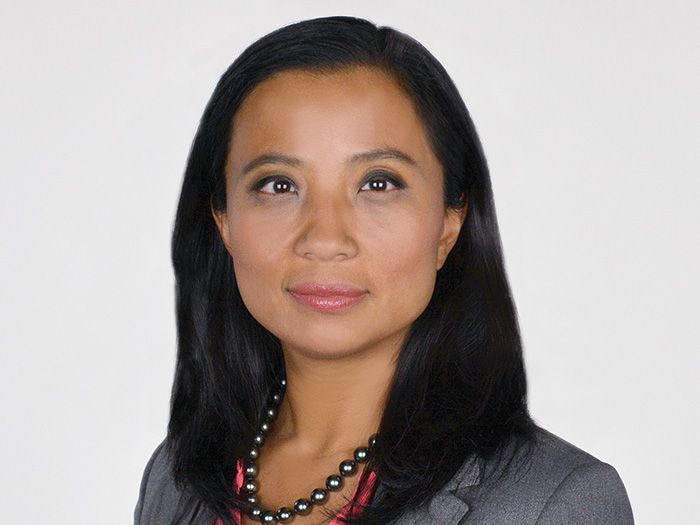7 Factors Potentially Driving Professional Liability Rate Changes in 2019

Professional liability risk is dependent on a number of external forces, including macro factors such as the state of the economy and nationwide litigation trends, and micro factors such as isolated events that generate negative publicity.
Although pricing for D&O policies over the past several years has continued to decrease, a number of trends are converging in 2019 that will challenge the professional liability market and potentially reverse the trend. On both macro and micro fronts, volatility is making this risk more difficult to insure.
“Given the change and ongoing uncertainty in this industry, it’s hard to see that there won’t be some impact on pricing in the year ahead,” said Bill Cotter, EVP, Chief Underwriting Officer – Professional Liability, North America at Allied World.
Here are seven factors that could lead to professional liability rate increases in 2019:
1. Economic volatility creates conditions for shareholder lawsuits.
“The professional liability market benefits from a stable economic environment, but we have been experiencing historic volatility in the stock market.
At the same time, corporate balance sheets are impacted by the fact that corporate debt has skyrocketed given the low interest rate environment of the past 10 years” Cotter said.
These factors combined mean that companies may have to re-evaluate how they finance themselves. If they had been financing through debt, then rising interest rates may inhibit their access to credit markets, which creates liquidity issues, which in turn can have an effect on stock value.
“That gives rise to shareholder litigation that directly impacts directors’ and officers’ policies,” Cotter said.
2. Policy pricing has grown “pear-shaped.”
According to an analysis by TransRe, pricing for directors’ and officers’ policies has dropped 15 percent over the past five years, even though losses have increased. Increased litigation has driven up both claim frequency and severity, but an abundance of capacity had the opposite effect on pricing.
“The economics over the past few years have been pear-shaped,” Cotter said. “Only time will tell if this trend will continue and, if so, for how long.”
3. The impact of negative events is greater than ever.
Event-driven litigation is emerging as a major driver of D&O losses. Thanks to the power of social media, any bad publicity focused on a C-suite executive travels farther and faster than ever before.
“Social media is putting the speed and impact of negative events on steroids.” Cotter said. “Bad press reaches many more eyes and ears and therefore may attract more litigious claimants.”
Want to learn more about D&O trends? Click to read why one broker expects the market to harden in 2019.
Claims can arise from a variety of events — allegations of sexual harassment, which have garnered immense public attention amid the #MeToo movement, man-made disasters and weather events and cyber breaches, among others.
Depending on the type of event, losses can cross multiple lines creating aggregation issues for insurers and reinsurers alike. A lawsuit alleging racial discrimination, for example, would primarily impact employment practices liability coverage, but resulting negative publicity could subsequently cause a D&O loss. High-profile cyber breaches can have similar outcomes if those affected believe management negligence was a factor.
4. New employment practices challenges are addressed through litigation.
Investigations and lawsuits filed by the Equal Employment Opportunity Commission reached record numbers in 2018, as did the proportion of class actions. The increase is driven largely by broader societal trends that are throwing employers for a loop.
An increasing number of people seeking coverage for transgender surgery under their employer-sponsored health plans, for example, is one such trend that most companies have never encountered before. Excluding the coverage could be construed as LGBTQ discrimination.
Marijuana legalization poses another challenge. How should employers respect employees’ newly granted right to use marijuana while also maintaining workplace safety and productivity? Are prohibitions of marijuana at work legal?
“These issues will be resolved through litigation, and there is ample opportunity for the plaintiff bar to bring many more of these cases in the future,” Cotter said.
5. Mega-liability losses are setting new precedents.
Jury awards and settlement amounts seem to reach unanticipated new highs every day. Multimillion and even billion-dollar verdicts are setting new precedents that will only make litigation that much more expensive in 2019.
“Certain pension funds are treating litigation as an investment class in itself,” Cotter said. “Litigation finance companies backed by hedge funds have existed for many years internationally, but here in the U.S. it’s relatively new. What does that mean for the future of litigation? We just don’t know.”
6. The Supreme Court opened up opportunities for forum shopping.
In the case of Cyan Inc. versus Beaver County Employees Retirement Fund, the Supreme Court ruled unanimously in 2018 that class action suits under the Securities Act of 1933 can be brought in state as well as federal courts.
Jury awards and settlement amounts seem to reach unanticipated new highs every day. Multimillion and even billion-dollar verdicts are setting new precedents that will only make litigation that much more expensive in 2019.
According to Harvard Law School, the decision “swings the doors of state courts wide open to actions asserting ’33 Act claims against issuers, officers, directors, underwriters, and others involved in the securities offering process.”
Said Cotter, “It creates the opportunity for forum shopping, as well as multiple cases arising out of the same event occurring at the same time and in multiple jurisdictions. As a result, litigation against directors and officers will likely grow more frequent and more costly in 2019.”
7. An accelerated pace of change dramatically impacts risk exposure.
Risks of all types are emerging and evolving faster than ever thanks to the rapid pace of change driven by technology. For directors and officers, the rise of crypto currency provides an example of just how quickly new risks develop and can have unforeseen impacts on professional liability.
“Say a private company with a D&O policy starts issuing cryptocurrencies mid-term. Because those currencies are unregulated and fluctuate so wildly in value, they are a source of potential litigation and create a very significant change in the insured’s risk profile,” Cotter said.
“But cryptocurrency is a symptom of a much broader challenge, which is the pace of change catalyzed by technological advancement combined with society’s general lack of understanding of how to manage it. A company’s risk profile can shift dramatically over a 12-month policy period.”
Communication is Key to Managing Change
Given how quickly things move today, insureds should make sure to sit down with their carrier far in advance of renewals so both sides can understand changes in risk profile and risk appetite and establish expectations early.
“There is a need for open dialogue,” Cotter said. “Clarity as to the nature of risk being presented is critical; underwriters need to understand risk to be able to underwrite. Likewise, carriers need to communicate how the market is shifting and explain how that impacts scope of coverage and pricing.”
Though relationships always matter, they become even more vital when so much volatility is at play. A history of transparency and trust will work in insureds’ favor.
“The best way for directors and officers to protect themselves,” Cotter said, “is to communicate early, often and openly with their brokers and underwriters.” &











